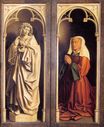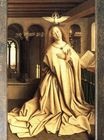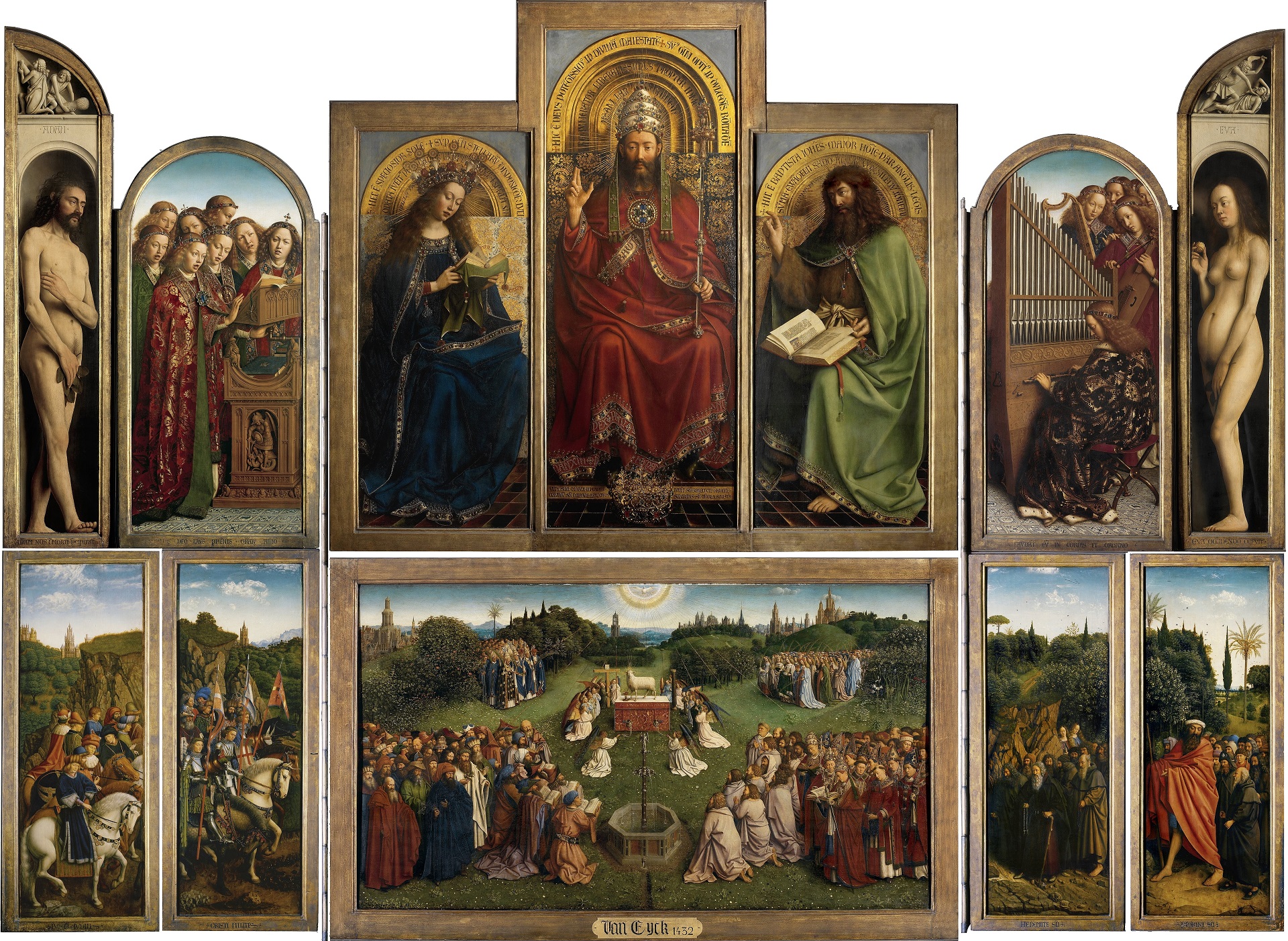Jan van Eyck - The Ghent Altarpiece 1432
 |
 |
 |
 |
 |
 |
 |

The Ghent Altarpiece 1432
431x350cm oil on wood
St. Bavo Cathedral, Ghent, Belgium
<< Previous G a l l e r y Next >>
From Wikipedia, the free encyclopedia:
The Ghent Altarpiece (or the Adoration of the Mystic Lamb, Dutch: Het Lam Gods) is a very large and complex 15th-century polyptych altarpiece in St Bavo's Cathedral, Ghent, Belgium. It was begun c. the mid-1420s and completed before 1432, and is attributed to the Early Netherlandish painters and brothers Hubert and Jan van Eyck. The altarpiece is considered a masterpiece of European art and one of the world's treasures.
The panels were threatened during outbreaks of iconoclasm, and have suffered fire damage. During different wars, some panels were sold and others looted. A number were captured by the German occupying forces during World War I, but were later returned to St. Bavo's Cathedral. In 1934 two panels, The Just Judges and Saint John the Baptist, were stolen. The "Saint John the Baptist" panel was returned soon after, but "The Just Judges" panel has never been recovered. Albert Camus in The Fall imagines it is kept by the protagonist, Clamence, in his Amsterdam apartment. In 1945, the altarpiece was returned from Germany after spending much of World War II hidden in a salt mine, which greatly damaged the paint and varnish. The Belgian art restorer Jef Van der Veken produced a copy of 'The Just Judges', as part of an overall restoration effort.